A few weeks ago, I had to go pick up a new pair of glasses up in Berkeley. I overfed the parking meter, so decided I’d spend some time poking around the nearby shops on 4th Street for some interesting ‘serviceware’ for this project. I came across this pretty-interesting piece:
I think it’s meant for martinis primarily; the bottom chamber is meant to hold ice water, to keep the martini chilled without diluting it. I’ve seen some Sake decanters that work in a similar way, and think they’re a little bit neat. So I bought it (it was on sale), and it immediately started eating at me what I should do with it.
The first, most-obvious idea was to make a cocktail with it. I liked the idea of filling the bottom chamber with something surprising and interesting. I decided to try making the godfather of Bourbon cocktails: The Old-Fashioned.
When Sarah and I were in Wellington, we had dinner one night at this restaurant around the corner from The Embassy called Cafe Bastille. This place was, once upon a time, my favorite restaurant ever. It changed management and lost its charm quickly, and later was converted to something completely different. Sarah and I had one very memorable date there one night though: Sarah wanted a cocktail, and mentioned aloud “We’re both from Kentucky. We should be good at this bourbon thing. But I have no idea what kind of bourbon cocktail to order.” I was in the same boat. We said as much to our waiter, who immediately brightened at this. “I’ll be right back,” he says. He returned a few minutes later with a large silver platter; atop it were all manner of condiments, bottles, stirring accoutrement, and a big bottle of bourbon. “You want an Old Fashioned. This is, like, the drink that makes or breaks bourbon. If you only every have one bourbon cocktail, this is the one.”
He goes on to explain to us, in elaborate detail, exactly how an Old Fashioned should be made. A napkin placed on top of each rocks glass has a sugar cube placed on top of it. Bitters are poured onto the cube until it’s saturated bright red, but the napkin absorbs the excess. Sugar cube goes into the glass, along with some orange peel and a few ice cubes. Pour some bourbon in, but just a little…”you want to dissolve the sugar in the bourbon, but the ice should chill everything. Too much ice, and you dilute it. You have to be gentle with the ice…too much stirring and it melts too quickly and your drink is watered. So keep adding ice, adding bourbon, stir stir stir, make sure that sugar is all the way dissolved…” He’s a real artisan with it, and Sarah and I absolutely loved the end result.
The fun part of this was ordering Old Fashioneds in bars around town in Wellington. Wellington has some GOOD fucking bars. Motel, Matterhorn, Alice, Hawthorne Lounge…each time we ordered an Old Fashioned at one of these places, the bartenders brightened, cleared off the bar, and set about crafting this drink. It was like a point of pride with them; they’d ignore other orders, meticulously preparing this drink, and they were inevitably delicious. Oftentimes they would grin and say something like “Do you mind if I make it a little differently?”. The Hawthorne bartender liked making his with Sazerac and blood orange bitters; Motel likes Woodford and Peychaud’s instead of Angostura. I totally loved it every time. Now, if I go into a bar and order an Old Fashioned, if the bartender asks what’s in it or has to refer to a book, I backpedal and go with a beer.
So I wanted to make a super-deluxe Old Fashioned, one that would make that waiter at Bastille proud of his legacy. I went to BevMo and pored through their bourbon section. There are some damn fine bourbons to be found in the world: Black Maple Hill, Noah’s River, Pappy Van Winkle 20-year. The thing is, I don’t want to make a cocktail with one of those; they’re too dear and have too much character on their own. Those bourbons I drink neat, or with an ice cube at the most.
A pretty safe bet for Old Fashioneds is Maker’s Mark, but I felt that was too predictable. Woodford Reserve, Knob Creek, Four Roses Small Batch, and Basil Hayden’s (even though that one’s not made in KY) are all great choices, but they weren’t terribly surprising. When Sarah and I were back in KY over Christmas this year, we spontaneously stopped into the Maker’s Mark distillery for a tour and a tasting one afternoon as I was driving her to Lexington from Leitchfield. The tasting is usually, well, pretty predictable, but this time around they told us they’d recently introduced, for the first time ever, a new bourbon to their lineup.
Maker’s 46 has its roots in original Maker’s, so its flavor profile is the same; a small subset of Maker’s Mark that’s been oak-barrel-aged and is ready for bottling is set aside and re-barralled with some charred 1-inch oak staves. Specifically, the staves are French Oak, #46, hence the name. The new Maker’s has much of the sweetness of original Maker’s, but is notably spicier, with heavy notes of cinnamon throughout, higher proof, and in general is a bit ‘musclier’ than the sweeter, caramelier original Maker’s. I liked it when we tasted it at the distillery; it was reminiscent of a rye whiskey, with with bourbon sweetness. I really liked the idea of trying to build up my Old Fashioned around this one.
My friend Arney and I love smoking cigars. For my money, nothing pairs nicer with some bourbon than a nice Davidoff, or my pipe. I love smoking my pipe. I’ve tried only a handful of tobaccos for it, but so far I tend to like sweet, vanilla-heavy moist tobaccos. There’s a great tobacconist around the corner from our current apartment that sold me a “Champagne” blend that’s deliciously sweet. I decided I wanted to try incorporating the tobacco into my drink somehow; the servicepiece lended itself perfectly to this.
At first I tried the obvious route of lighting the tobacco and putting it in the lower chamber, but this was problematic for two reasons. 1) it smelled like smoke; more acrid and bitter than the unlit tobacco. This is fine normally, but Maker’s 46 is smoky on its own, so the lit tobacco didn’t really compliment it as much as it just punched up the overall smoky factor. 2) pipe tobacco is a finicky bitch, and doesn’t stay lit unless you babysit it fiercely (by puffing on the pipe). So I got a whiff of smoke that dissipated quickly; not really what I was after.
The second idea I had was to pour boiling water over it. The steam, I thought, would help release the aromatic oils without the carbony smoke, which would make the whole thing smell really sweet. This worked like gangbusters; pouring boiling water over the tobacco, then plugging the chamber with the top glass caused steam to fill the chamber. When I lifted the glass off a few seconds later, a big waft of steamy, sweet, tobaccoey vapor floated up. It was delicate, and as I held the glass longer, the steam sort of vaporized the area and the smell got more ambient. It was like I was sitting next to an old man with a cane telling me stories on his front porch. I wished it would be a bit punchier, but I feel like this idea is cool nonetheless.
Playing with the tuille for the Pork Belly dish piqued my curiosity about sugar work. It’s another area I don’t know much about, but the Alinea book leverages frequently. I had this idea to make a disc of sugar floating above the bourbon in the glass, so that it had to be cracked like a creme brulee and stirred into the bourbon. I thought this would look cool and add to the interactivity factor.
The Alinea book works with a mishmash of various types of sugars, none of which I knew a ton about. There’s table sugar, glucose, dextrose, isomalt, fondant, sorbitol…all sweet stuff that I didn’t really understand much about. So I hit up Wikipedia and started reading. Here’s what I figured out:
Let’s start with the familiar: table sugar. The swanky term for this is Sucrose. Sucrose is a disaccharide, which basically just means “made of two other sugars”. It can be broken apart into two monosaccharides, Glucose and Fructose. These two building blocks are simple sugars. Glucose can be found in dry, powdered form, in which case it is generally called Dextrose. The act of breaking Sucrose into Glucose and Fructose is called “inverting” Sucrose, and the resulting broken-apart mixture of Glucose and Fructose is called an “invert sugar syrup” (Glucose and Fructose are also sometimes referred to independently as “inverted sugars” or simply “invert sugar”). Breaking Sucrose apart is pretty simple to do; if you just boil some water and table sugar, you can break apart a modest amount of the Sucrose, giving you a weak invert sugar syrup. If you really want to go balls-out, you can add an acid (citric acid, lemon juice, or cream of tartar all work) in an amount of 1 gram to 500g sugar in water and simmer gently for about 20 minutes to convert nearly all of the sugar. If you don’t feel like doing this yourself, a very prevalent brand name for invert sugar syrup is Trimoline. “But why,” you may ask, “should I care about this?” Invert sugars are less prone to crystallization than Sucrose, and are more hygroscopic (they attract and hold moisture more easily). Fructose tastes sweeter than Sucrose, while Glucose tastes less sweet. For these reasons, bakers dig using invert sugars in baked goods to help keep them moist for longer and to better-control sweetness levels. A nice example of a naturally-occurring invert sugar is Honey.
[NOTE: I’ve seen on a few forums and boards discussions of Karo Light Corn Syrup being ‘the same thing’ as Glucose. This is true only insofar as Glucose is most-generally derived from corn in North America, as is Karo Light Corn Syrup, and on the surface, the only difference seems to be water content. Karo also differs, however, in that it also contains fructose, salt, and vanilla flavoring. To that end, saying that they are equivalent is not correct. In baking applications, the two can often be used interchangeably; for the Alinea Project, however, I am considering them two separate things.]
The term “sugar”, in addition to describing the above naturally-occurring compounds, can also describe something called a Sugar Alcohol. Sugar Alcohol is what you get when you hydrogenate (add hydrogen atoms) to Sucrose or other natural sugars. Adding hydrogen atoms makes our bodies unable to completely absorb the sugars entirely, while still leaving them sweet. This leads Sugar Alcohols to be popularly-used as sugar substitutes. Xylitol is one such Sugar Alcohol you might have noticed in your grocery store near the Stevia and Sweet-N-Low that’s a Sugar Alcohol Sucrose substitute; it’s also found in sugarless chewing gums. Xylitol is interesting in that tooth decay-promoting bacteria consume it, but because of its antimicrobial properties, they then starve to death. Sugar Alcohols cannot be broken down orally, and so do not promote tooth decay. Because they cannot be entirely absorbed through our gastrointestinal system, our bodies have to expel them, which leads them to cause fun stuff like flatulence or diarrhea when consumed in larger doses. Exciting! Sugar Alcohols also do not brown when heated (they do not caramelize). Some Sugar Alcohols produce a cooling effect on the tongue, and so are often used in ‘sugarless’ mint chewing gums.
The Alinea cookbook frequently makes use of Isomalt, which is a Sugar Alchol. Isomalt has a lower melting point and tastes less sweet than Sucrose. It does not caramelize easily and does not dissolve in water easily. Isomalt is frequently used in sugar sculpture.
Fondant is a sugary substance that warrants mentioning here. Poured Fondant, the kind used in making tuilles in the Alinea cookbook, is a simple mixture of sugar and water. Water is able to dissolve more sugar when it is heated than when it is cool, so supersaturating boiling water with sugar, then shearing the mixture as it cools to prevent seed crystals from forming, yields a thick, creamy mixture often used for cakes.
This factual stuff was all well and good, but I wasn’t getting a lot of strategical information from this. I emailed Martin Lersch again from Khymos.org and asked him if he might have any clues or ideas. He pointed out something that should have been obvious to me: while sugar work is a bit foreign to me, it’s terribly familiar to bakers and confectioners, so maybe I should troll through Google Books and see what I found. I did this, and found a ton of technical papers and books about the manufacture and digestion of various sugars, but application works were sparse. I finally came across this very cool book that has an entire chapter dedicated to explaining the differences between sweeteners from a baking perspective. Still not EXACTLY what I was after, but certainly a really good starting point. Some stuff I learned:
- Creamy confectionery, such as fudge, is made great by tightly controlling the granularity (crystallization) of the sugar within it, as well as the moisture content. If one makes fudge using only Sucrose, one might want to add an acid (Cream of Tartar) to force-invert some of the sugar to leverage the resistance to crystallization and the moisture control that invert sugars offer. The disadvantage to this, however, is that the cooking temperature, time, and amount of acid to use are difficult to control and measure properly. It’s far easier, then, to use invert sugars like Glucose directly.
- Glucose is useful for increasing the pliability and strength of pulled sugar confectionery.
This information was still fragmented to me. I figured the best way for me to really put all this together was to do some SCIENCE. So here’s what I did:
Most Alinea sugarwork recipes I’ve seen so far involve making a homogeneous mixture by heating combinations of sugar to the hard crack stage (295–310 °F), grinding in a spice grinder, sifting over silpat, then melting in the oven. So I made several mixtures of sugars and took them through this process, noting differences in various properties of each mixture at each stage of the process. The mixtures were:
- 100% Sucrose (table sugar)
- 100% Sucrose mixed with equal weight water (simple syrup)
- 50%/50% Sucrose and Glucose
- 50%/50% Sucrose and Isomalt
- 33%/33%/33% Sucrose, Glucose, Isomalt
I put each of these in a pan and cooked them to hard crack stage, then poured the molten mixture on silpat and let cool completely.
[Note: This should have been obvious, but it doesn’t really make sense to try to bring dry, crystallized sucrose to the hard crack stage (sugar stages describe the relative sugar concentration in a syrup; hard crack usually consists of a solution that is 99% sugar. Trying to heat crystal sucrose to the hard crack stage, then, is nonsensical). Putting dry sugar in a pan and heating it in attempt to melt it means bringing it well above the actual hard crack stage. Sucrose melts at 367°F, and begins to caramelize at 320°F, so for all practical purposes, caramelizing and melting table sugar are pretty much the same thing. This all probably seems so obvious that it’s stupid, but what I learned was that it’s impossible to make glass out of dry sucrose without caramelizing it. Putting all this together made me wonder what would happen if I cooked simple syrup instead. In this case, I was still dealing with plain Sucrose, but rather than melting it, it was dissolved in water and then reduced. You can see from the photos that much less caramelization occurs, because the sugar isn’t ‘melting’. But, very dramatically, the resulting molten liquid crystallized heavily when it cooled. So, though cooking simple syrup can give a less-caramelized glass, it can’t give a CLEAR glass. This makes sense; I’m basically adding water then boiling it all back off until the sugar is more or less near its original form without undergoing the molecular breakdowns associated with caramelization; so of course it has a tendency to want to crystallize back up.]
The 50-50 Glucose-Sucrose mixture exhibited similar caramelization as the Simple Syrup mixture, though no crystallization has occurred. This coincides with what the Baking book mentions, but it’s cool to see this effect very clearly in action.
The 33-33-33 Glucose/Sucrose/Isomalt mixture also exhibits no crystallization, and, because of the inclusion of Isomalt, we can see a much clearer glass with nearly no caramelization happening. It’s cool to clearly see the differences here.
The outlier for me was the 50/50 Isomalt/Sucrose mixture, which I made into simple syrup with an equal weight of water before cooking. Again I get a very clear glass with no crystallization. I’m not sure what to make of this just yet; some more experimentation is needed to tell how this compares to the 33/33/33 mixture, as they both visually look similar.
The next stress test I put the sugars through was, well, a test of…stress. I cracked each sugar disc in two and tried to gauge how much effort it took (i.e. how strong the sugar discs were). I’m not running a Mythbusters lab here, so I didn’t have any swanky gauges to try to exactly estimate this…I just tried to get a sense of it with my hands. The Sucrose simple syrup mixture was by far the easiest to break; it yielded with almost no effort at all. Second was the carmelized Sucrose disc; both of these were brittle and reasonably weak. The other three were notably stronger, but the differences between them was subtle. So subtle, in fact, that I stopped after the first one and started taking photos, to see if looking at the break patterns might give me any clues. Plus, I figured, the only thing that’s gonna save this long-winded ridiculous exploration of sugar is some CSI-style photos.
R…right?
We can see that the compounds involving glucose exhibited ‘smoother’ breakage; the glucose adds strength to the mixture. Samples without glucose show more jagged-edged boundaries, indicating the crystalline structure of the mixture.
My next test was a taste test. I powdered (in a coffee grinder) a sample of each disc, put each in a shot glass, and asked Sarah to help me decide the order of sweetness. I asked for help because 1) I already had a hypothesis, and didn’t want that to skew things, and 2) I feel like Sarah has more tastebuds than I do…she seems better able to pick apart subtle flavors than I am. We both tasted each and ranked them as best we could.
The Sucrose as Simple Syrup (which was uncaramelized) was by far the sweetest…that one was easy for us. We were both surprised at how difficult the caramelized sucrose was to compare; the caramel flavor made it taste notably different, and we both felt it was less sweet than the uncaramelized sucrose. I can’t tell if this was because the flavor was so outstandingly different, or if the breakdown of sugar into caramel literally means the sweetness becomes lost in the process (which makes sense in my head?). Again, the isomalt/glucose/sucrose mixtures were much more difficult to pick apart, and neither was confident in our rankings.
The photo above represents our sweetness rankings: mine are the colored bowls, sarah’s are the shot glasses. Higher vertically means more perceived sweetness.
My next test was to try melting the sample powders. I made a stencil (similar to how I made my Pork Belly Tuile stencil), and made 5 identical stenciled piles of the 5 sugar combinations. I put the samples in an oven set to a steady 350°F, and waited. The compounds with Isomalt melted first, which at this point was predictable for me. Surprisingly again, the caramelized sucrose melted quickly as well (or remelted, I guess would be more accurately-phrased) A few minutes later, the Glucose-Sucrose mixture melted. And I waited for another 10 minutes before I realized that the Sucrose Simple Syrup mixture, which at this point was back to the original sucrose crystal form, would never melt at 350°F.
My final test was to try melting the resulting tuiles over some pie weights. I felt this would demonstrate something about the strength and pliability of the compounds. As I was setting this up, the Isomalt/Glucose mixture, which was extremely hydroscopic, was stuck outright to my countertop and shattered when I tried to pry it off. Working with this particular compound was a total pain in the ass, which makes me suspect this is why I’ve yet to see this particular combination used in any of the Alinea recipes. I forged ahead with the three remaining melted tuiles: Caramel, Glucose-Sucrose, and Glucose-Sucrose-Isomalt.
I don’t really have strong conclusions to draw about which is ‘better’, but the difference is obvious.
So. All of this is totally great, right?
Well, not really. I mean, I’ve learned a ton. But back to my cocktail; I realized one fatal flaw in my plan of making a sugar disc atop the cocktail: breaking and stirring in the sugar disc to the bourbon required a lot of effort. None of these sugar compounds would melt quickly, and in fact the Isomalt-based ones would melt more slowly. So a person would have to stir and stir and stir to get any of these to dissolve completely in cold bourbon. That doesn’t sound fun.
So, I stepped back and thought about making an ice disc instead of a sugar one. Maybe I just presweeten the bourbon, and rather than cracking sugar, a person cracks ice into the bourbon.
Aside from being pretty boring and blatantly gimmicky, this proved difficult to actually accomplish. I tried making a few ice discs using some small pop-out cake pan trays in our freezer, but our shelves aren’t exactly level. This meant that the ice discs were more massive on one side than the other, which led to them sitting crookedly in the glass. The ice was pretty much frictionless against the room-temperature glass, and I realized that if I wanted to make more than one of these, production would be a total pain. So I scrapped the idea.
I spent several days rolling this whole thing around in my head. The sugar disc idea didn’t make sense, the ice disc was worthless…I was at a bit of a dead end.
Then an idea hit me: Maker’s 46 is very cinnamon-heavy. What if I try to pick a completely new ingredient to pair with cinnamon? If the ingredient was aromatic and heat-resistant, I could maybe melt it into the sugar disc. The disc then goes from being a key sweetening agent to a slow-release medium for holding a new aromatic ingredient. This idea got me way excited; I could basically play to the strengths of everything I’d learned.
I got home and flipped through The Flavor Bible looking for some ideas. There are obvious pairings with cinnamon: clove, nutmeg, pumpkin pie…basically heavy, warm Autumnal flavors. I didn’t want any of these though; the bourbon itself was a sledge hammer, so adding spice on top of spice would make it just to heavy. I wanted to lighten it up a bit. Citrus sounded nice. “Tea” was listed as a flavor affinity. No specifics, just “tea”. “Hmm”, I thought. “Wonder about an orange spice tea. Or maybe an Earl Grey”. For some reason this idea sounded cool to me: the slow-release Isomalt-based sugar would basically mean the bourbon would slowly diffuse with the tea, and the whole cocktail would turn into something that would evolve. That seemed promising.
Another flavor pairing I really liked was “rice”. A few nights ago, Sarah and I had a date at Ipukku in Berkeley, a Japanese Yakitori place that was delicious. I had a Sochu tasting platter, having never had sochu before, and one of them was made form toasted rice. It was really delicious. The idea of sweet toasted rice and bourbon inherently sounded delicious to me. So I got back to work.
The first thing I tried was toasting some sushi rice. This was easy, and throwing it through my coffee grinder gave a lovely, full-flavored toasted rice powder that seemed useful. I also liked the idea of getting some vanilla involved; taking a sip of the bourbon with a whiff of fresh vanilla beans was great. But vanilla might be too powerful, I worried, so I looked around and found some tonka beans. These are much more delicate, so I thought they might work better. I laid out my stencil on some silpat, and sprinkled some rice powder, orage and grapefruit zest, tonka bean, and maple sugar onto the silpat before topping it with some powdered isomalt-glucose-sucrose compound. I tried melting it in the oven and 350°F, hoping for a clear glass with some beautifully-inlaid aromatics atop it. This didn’t quite work: the sugar melts opaquely, and surface tension caused it to draw up rather than spread out. Because it had no direct contact with the slipat, but rather with dry, unmeltable ingredients under it, it ‘slid’ into itself a bit. I tried this a few times, and it ended largely unsuccessfully. The final try I thought “Well, I should at least see how this tastes. So I chucked an ugly disc into a tumbler and topped it with a splash of bourbon and an ice cube, and let it sit for a few minutes. Sure enough, the sugar didn’t immediately dissolved. I was happy to see this; I was on to something.
The flavor, when I tasted it, was really great. The toastedness came through really well and I felt it complimented the bourbon awesomely. The tonka bean got lost other than its odd cooling/numbing effect it had on my tongue; it’s too delicate a flavor. I need to go back to vanilla. The orange didn’t really diffuse into the alcohol, but when bits of it broke off form the sugar and I tasted them when sipping the bourbon, it was great.
I’m going to stop writing now and poke the “publish” button here, because this is ridiculously dense and long. I don’t yet have conclusions about how to complete this, so I’m just going to let it simmer in my head for a little while.
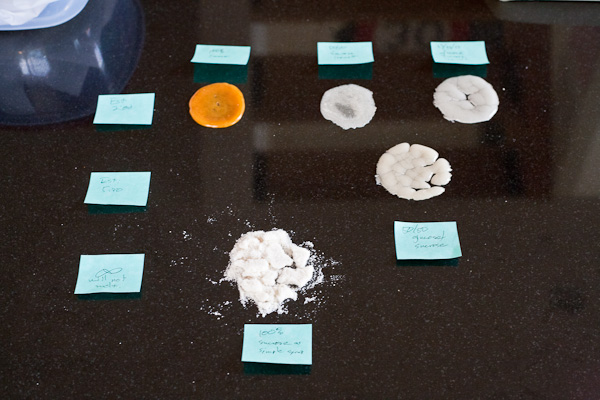
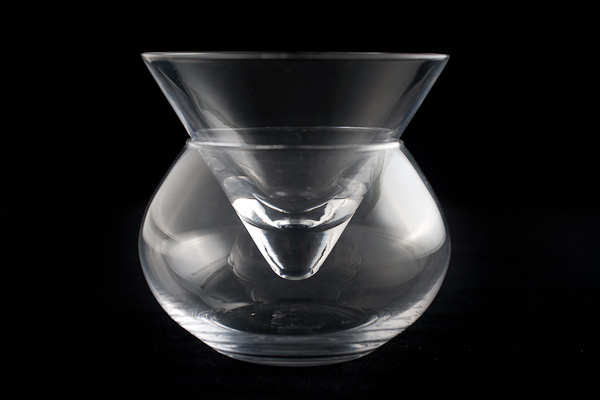
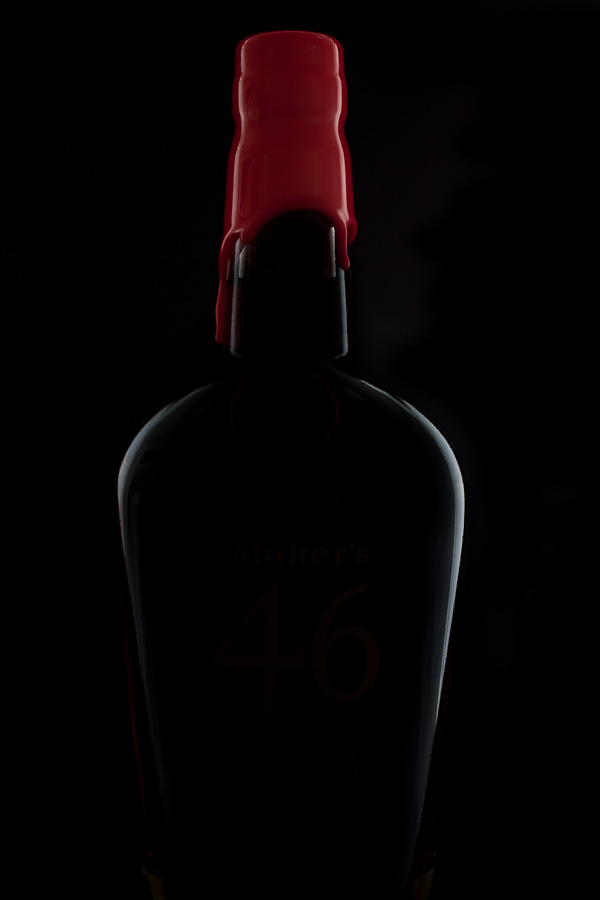
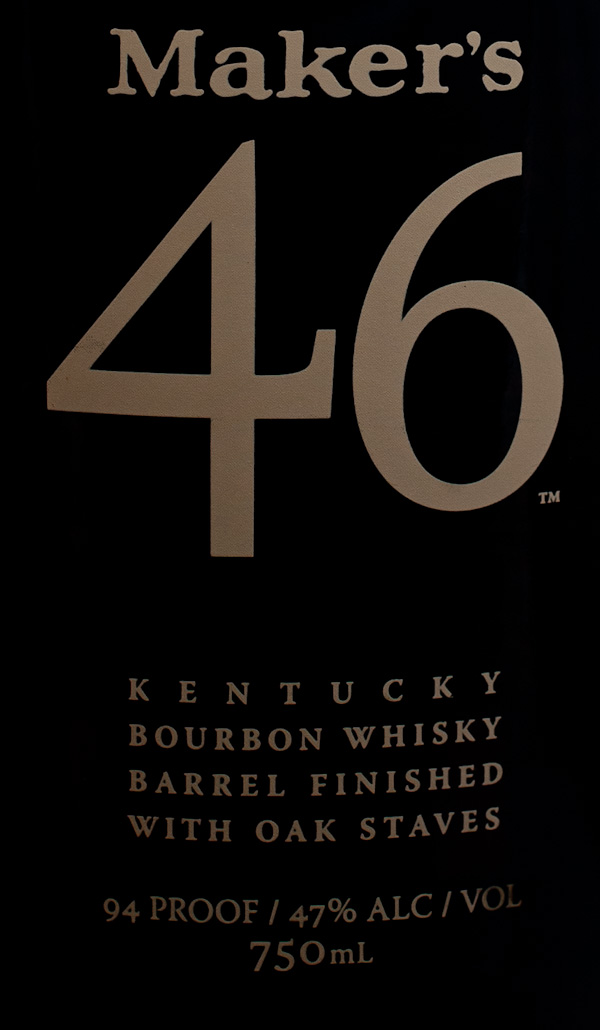
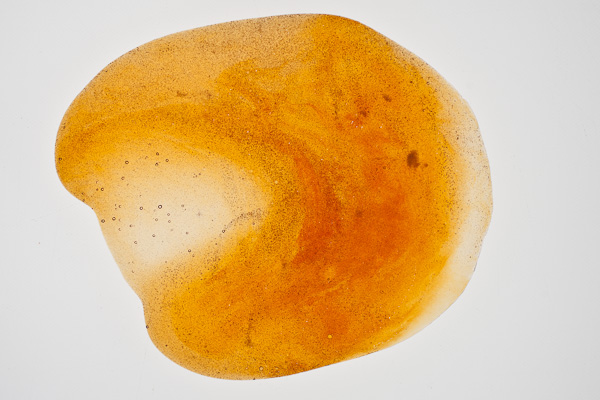
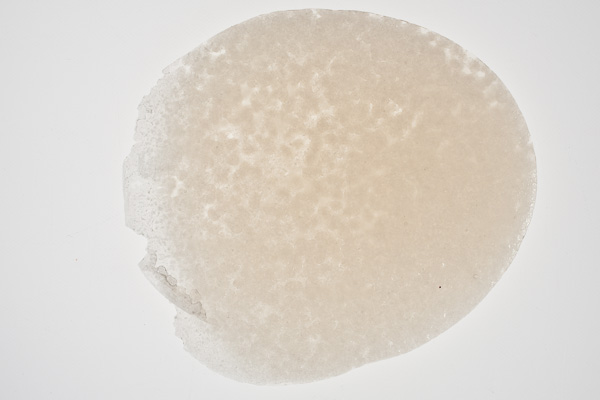
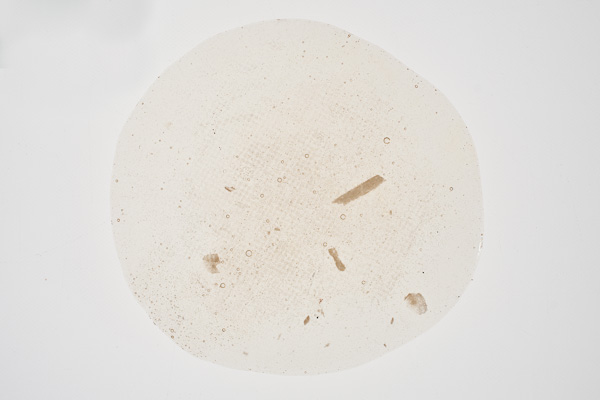
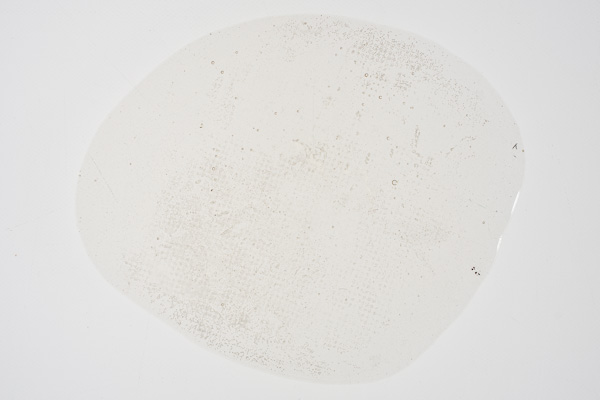
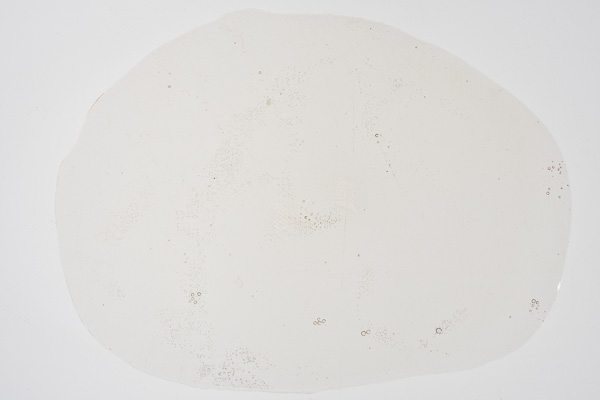
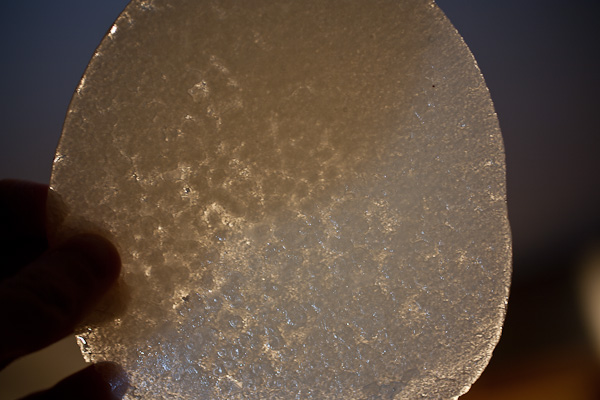
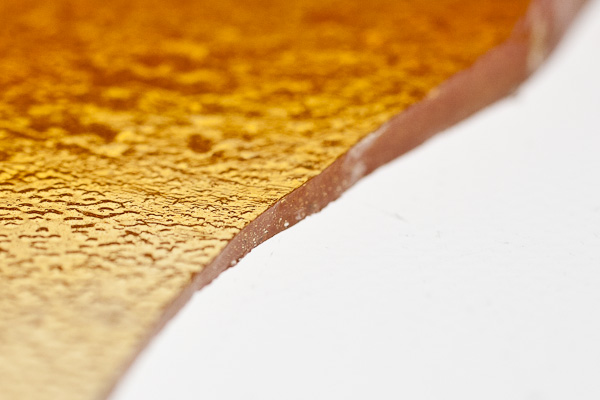
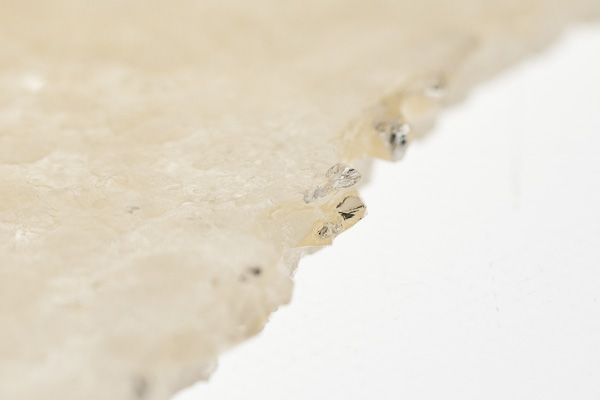
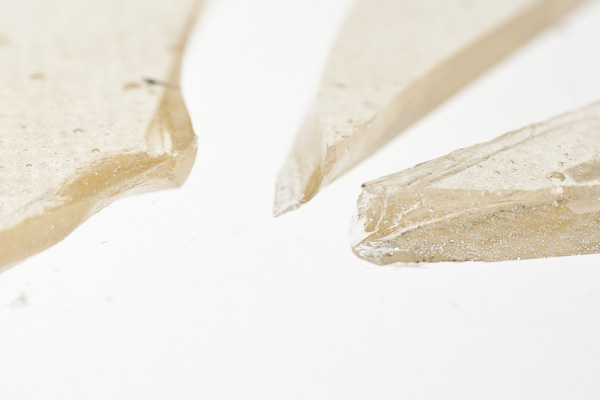
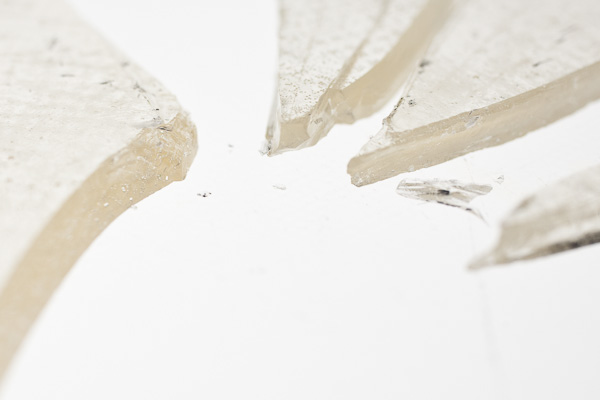
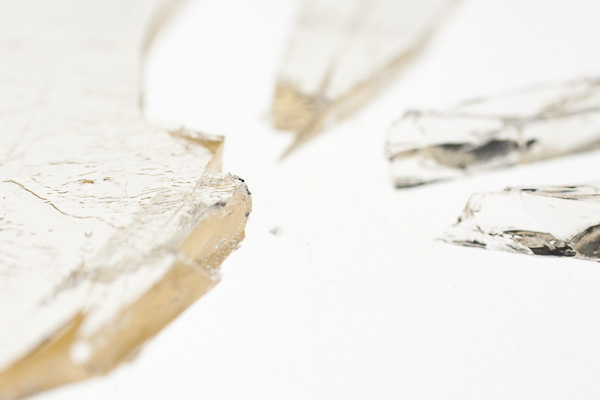
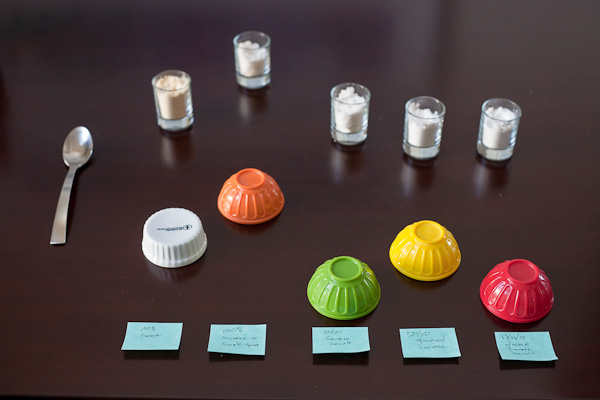
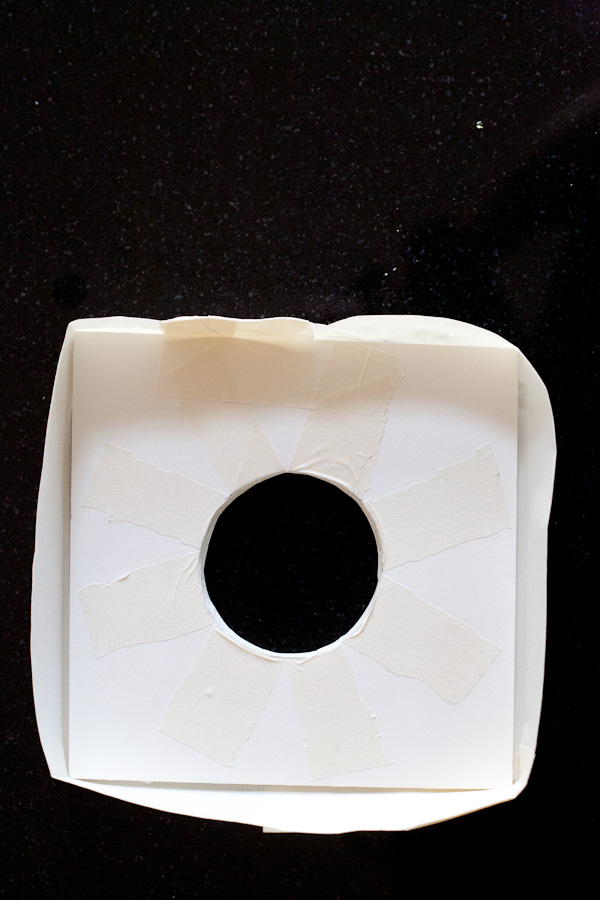
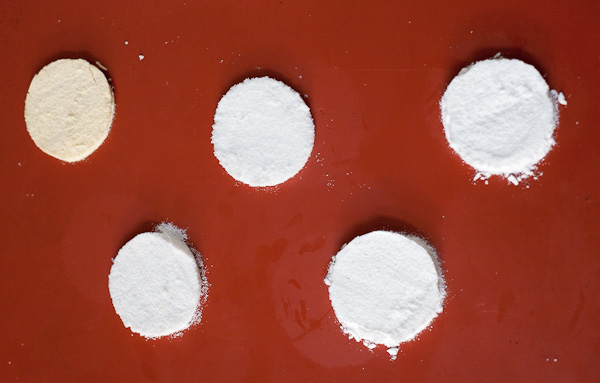
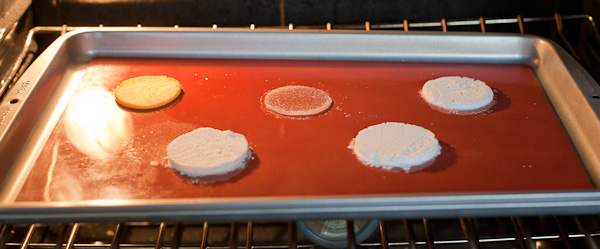
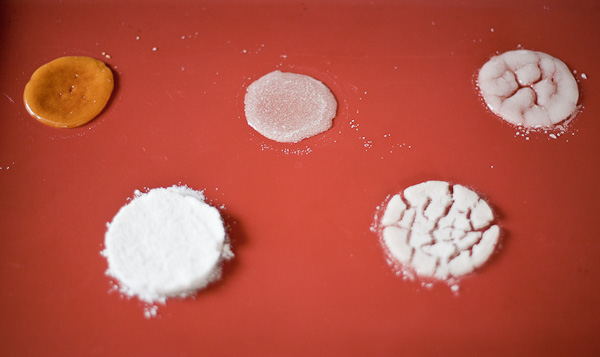
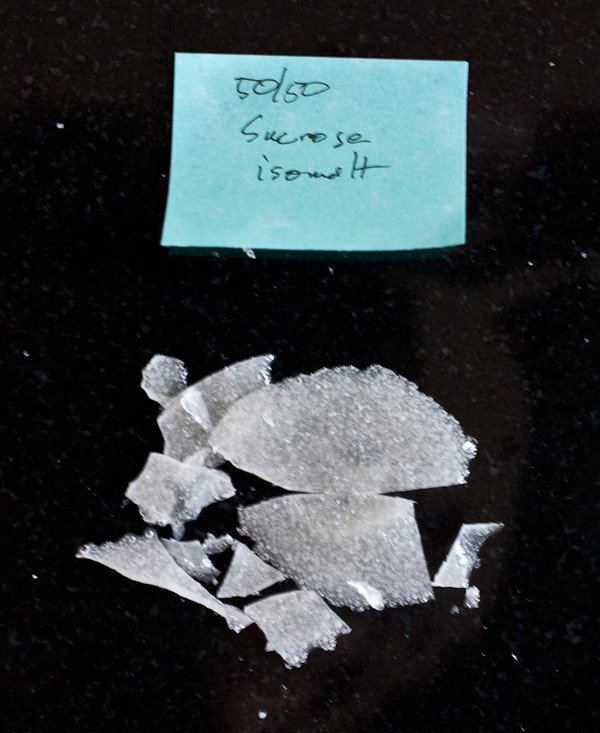
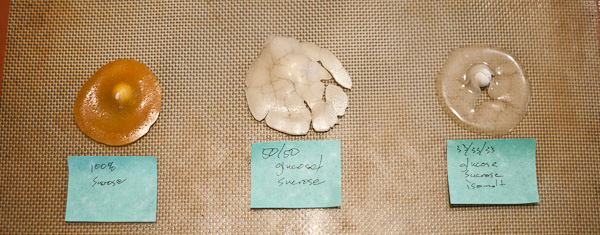
Rather oddly I’ve just started craving an Old Fashioned, 6.31 pm … I think I just might.
(I’m looking forward to seeing how your Old Fashioned Quest continues!)
Hi Allen!
The quest for a more ornate old fashioned! Very cool. Keep think, don’t give up!
Do you know if there’s an offical name for the martini glass and cooler combination? I saw one in a bar here in London recently.
Hope you’re well!
Adrian! Ha, what’s up dude?!
I don’t remember exactly what Crate and Barrel called them, but it looks like a google search for “Martini chiller” is the right incantation to bring up heaps of them:
http://www.google.com/search?um=1&hl=en&biw=1456&bih=1015&tbm=isch&sa=1&q=martini+chiller&aq=f&aqi=&aql=&oq=
I’ve also seen some funky variants of this idea used to chill sake.
Good to hear from you sir!
Wow, science, it’s been a long time. I admire your tenacity. I suspect I’d be put off by all the dishes that trial and error are bound to involve. Good luck. Looking forward to further progress.
Allen, that dark photo of the Makers Mark bottle is really sexy. Very cool. Good job.
“Heaps” 😀
Allen, I have just discovered your site and I am in awe. Thanks for sharing the details behind your experiments; they are already lending inspiration to my own foodly adventures.
H 🙂